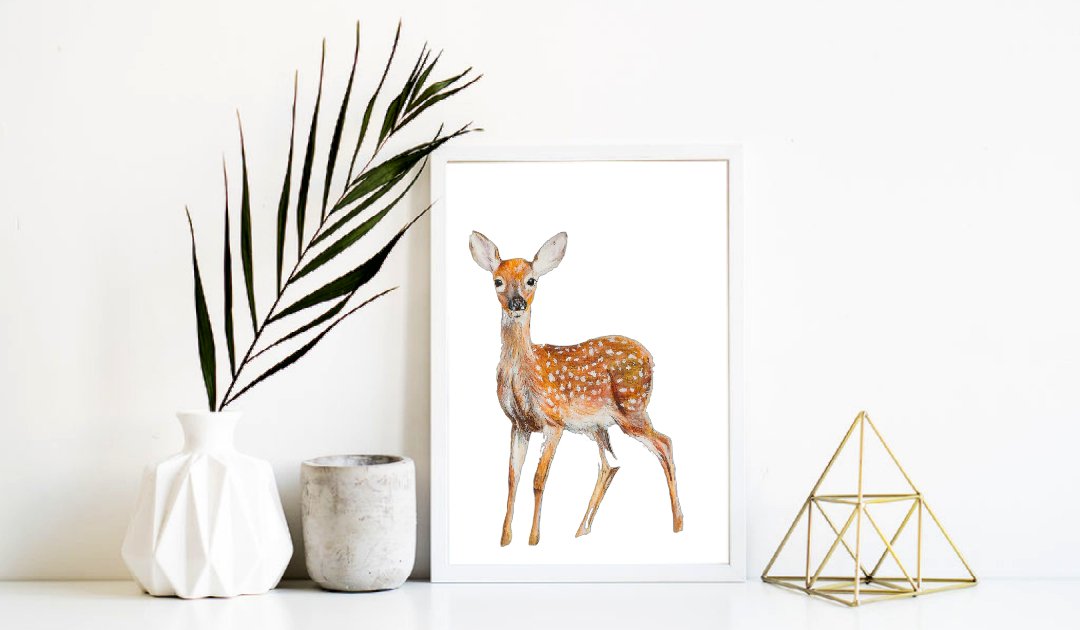How to Find the Value of Art Prints – 10 Tips
If you have art in your home, you might be wondering how to find the value of art prints. Outside of the enjoyment you get from having it within your home, you can follow these tips for evaluating the financial value you can get from those prints if you were to sell them.
Art collectors and enthusiasts should do this regularly for the purposes of documenting and insuring these pieces within their homes. That way, if anything were to happen to them, you can afford to purchase new art for your home, even though you'll likely never be able to replace these unique pieces.
A Guide on How to Find the Value of Art Prints
Ready to evaluate the financial value of your art prints? Here's a step-by-step guide on how to do so.
1. Learn About the Artist
Do some initial research into who the artist is and how well-known they are. Artists are often categorized into one of three areas during their careers.
1. Unknown
2. Up and coming
3. Well-known
As the artist progresses through these phases of their career, the value of their artwork will change. As you investigate the life of the artist, look for hints, such as online buzz about the artist, upcoming galleries, artwork in museums, etc. These will all offer hints as to how well recognized the artist is.
2. Find Out More About the Artist’s Work
The volume of pieces of art that an artist produces can impact the total value of the art hanging within your home. That’s because if there are more pieces similar to the one you have, it won’t be as unique, and therefore won’t be worth as much. Artists who produce less tend to have a higher price tag on each piece.
3. Evaluate Whether the Art Print is One-of-a-kind
Due to the way supply and demand works, duplicates of the same print will decrease the total value of that art print. Singular works of art are worth far more than those with replicas. Paintings tend to be the artwork with the highest value since they are not easy to replicate. There are simply fewer paintings than there are other types of art that are easier to replicate.
4. Learn When the Artwork Was Completed
Generally speaking, when a piece of art is completed earlier in an artist’s career, it is worth more. That’s when the artist’s work tends to be more daring and creative. Once the artist establishes a reputation for him or herself, they will fall more into specific patterns for how they create their art and lose some of the boldness that they exhibit early in their career.
5. Review the Size of the Artwork
The larger the artwork, the higher appraisal you’ll likely receive for the work. Smaller artwork is not as difficult to produce, making it worth a bit less than larger pieces.
Looking for a Wildlife Paintings in Watercolor?
6. Look Into Where the Artwork Has Been
Just like the artist has a story, so does the artwork. If someone renowned has owned the artwork previously, it might now be worth more. Sometimes it's hard to know the full history of a piece of art, but do your best to learn more about its owners to see if that could impact the total value of the piece.
7. Take a Look at the State of the Artwork
First and foremost, you’re looking for rips, tears, water damage or discoloration on the artwork. These are the most impactful changes to artwork as far as its value goes. But beyond that, you’ll also want to evaluate color fading.
While color fading is natural with time, it will still impact the value of the art print. You want to do all you can to preserve and protect your art, such as keeping it away from direct sunlight and in a dry, temperate place.
Don’t get so wrapped up in preserving your artwork that you hide it away where you can’t enjoy it. You’ll need to balance preservation with enjoyment as you work to ensure long-term value from the art.
8. Get a Feel for Market Demand
Even the most valuable artwork can lose some value if there isn't a demand for it currently. Sometimes, there is too much art on the market to get top dollar for your piece. There are only so many art collectors and enthusiasts out there, which means the timing for when you sell your art could have an impact on its value. The more art on the market, the lower the price for art tends to be.
9. Investigate the Going Rate for Other Artwork
Reviewing sales for similar pieces of art will provide insights into how valuable your collection is at any given time. Artwork from the same artist that is a similar size can provide you with valuable details about what to expect from your art appraisal.
10. Realize that Artwork Values Will Change
The value of your art prints is subject to change over time. You need to keep your valuations up to date if you’re hoping to insure your art at its actual value. Or if you plan to sell the art print and want to get top dollar, you might need to wait and attempt the sale several times. Patience is the key to getting the greatest financial value from a work of art.
Still unsure about how to identify high-value art prints? Watch this video on 7 tips for antique prints and value.
Why Do I Need an Art Appraisal?
Before you can insure an object like an art print, you’ll need to get an appraisal. This helps insurance companies protect themselves against fraud. Or, if you’re looking to donate a piece of artwork, you should get it appraised first to ensure accurate tax deductions. You’ll use the appraisal in the case of a tax audit.
Art donations also often come with an appraisal so that the nonprofit knows the value of the piece you’re donating.
If you’re dividing property, you might need to prove its value with an appraisal. That way, lawyers know what is fair.
Generally, an appraisal is not the same as authentication. If you have a rare piece of fine art, you'll need to get it authenticated before the appraisal since the appraisal team will operate off the assumption that the art is authentic. In rare cases, you might find an appraiser an authenticator in one.
Finding High Quality, Affordable Art Prints for Your Home
If the process of appraisals and authentication for your art prints doesn’t sound interesting to you, find high-quality, affordable art prints from Heidi Joy. This artist’s work makes it easy to bring the outdoors in with stunning prints of nature. You’ll find plenty of options for nature and wildlife-inspired watercolor artwork. Shop the collection now for distinguished artwork for your home.


